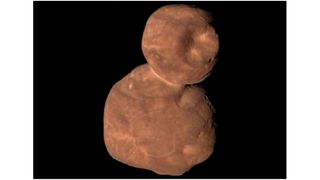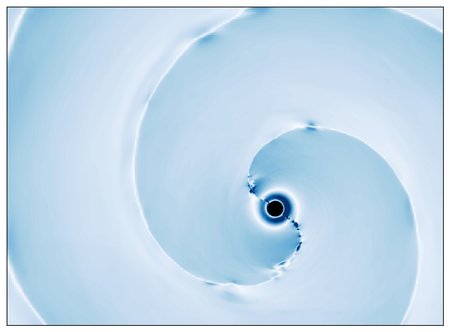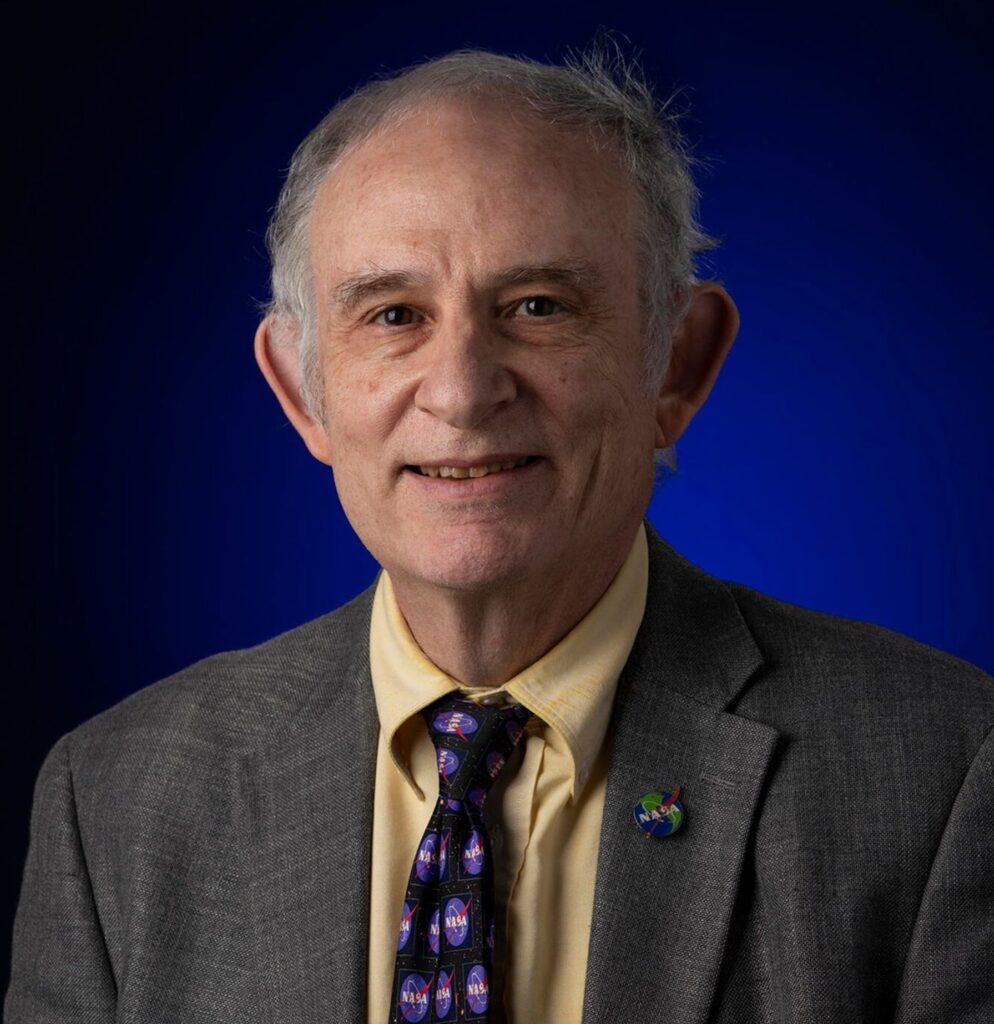NASA’s New Horizons spacecraft conducted the first and only flyby of the Pluto system, culminating at the closest approach of that distant world in July 2015.
Sailing onward, the probe carried out a Jan. 1, 2019 flyby of Arrokoth, a Kuiper Belt Object, or KBO, located in a region of space beyond Neptune called the Kuiper Belt. There are scads of other icy worlds residing in the Kuiper Belt, celestial leftovers from the formation of our solar system.
For New Horizons, the gathering of more exploration science is, pun intended, on the horizon.
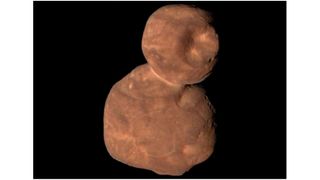
Invaluable observations
Late last year, a study by the U.S. National Academies titled “The Next Decade of Discovery in Solar and Space Physics: Exploring and Safeguarding Humanity’s Home in Space” observed that “key challenges are to keep receiving the invaluable observations from the New Horizons and Voyager spacecraft, which are the only means to gain firsthand knowledge of the environment in the outer heliosphere and outside the heliospheric bubble.”
You may like
Related: New Horizons: Exploring Pluto and beyond
That report also noted that “moving outward, the boundary of the solar system where the sun’s influence wanes and is replaced by the interstellar environment, there is much to be discovered.”
The heliospheric decadal report is important for several reasons, said New Horizons Principal Investigator Alan Stern of the Southwest Research Institute in Boulder, Colorado.”It’s a completely independent validation by the community about how important and unique the New Horizons science is to that field,” he told Space.com.
New Horizons is gearing up to cross the sun’s “termination shock,” Stern said, where the subsonic solar wind slows down and becomes subsonic as it rams into the interstellar medium.
Related: New Horizons Pluto probe notches 3 new discoveries in outer solar system
Guessing game
Though New Horizons is now in hibernation mode, the spacecraft is still collecting heliophysics data around the clock, Stern said, squirreling that data into onboard solid state memory — basically a big flash drive.
“We went into hibernation mode on October 3 of last year. We exit that mode on April 2 of this year. When we wake up, we’ll transmit the backlogged New Horizons data down to NASA’s Deep Space Network,” said Stern.
“But actual crossing of the termination shock, the timing is a guessing game. No one can fully predict that, but it could potentially be as early as 2027 … and we want to be on guard then so we don’t miss it,” Stern noted.
Meanwhile, New Horizons is in perfect health. “There’s nothing broken on the spacecraft and the seven instruments that it’s carrying,” he added. “They are working super-well, as well as when they were launched.”
Related: New Horizons Pluto probe notches 3 new discoveries in outer solar system
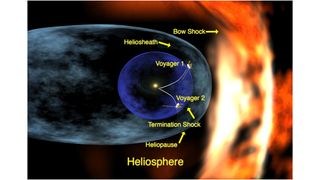
Fuel gauge reads low
But New Horizons is low on propellant. “And that just means we have to be miserly with that fuel. Any fuel we spend is not going to get us to a new flyby of a KBO, so it reduces the odds of a flyby,” said Stern.
Being tight on fuel means that Stern has adopted a new title to go along with principal investigator: “Fuel hoarder in chief.”
Regarding the spacecraft’s power and data transmission, the long-distance craft is good to go. Its nuclear power generating system will perhaps last into 2050, Stern advised.
So, could New Horizons perform a flyby of another far-flung KBO?
Possibly, if the mission gets some help from Earth-based observatories, particularly the soon-to-come online Vera C. Rubin Observatory. Rubin’s detection of KBOs along an attainable New Horizons flight path would “significantly raise the odds of getting a flyby,” Stern added. “But it’s a needle in the haystack search,” he added, “even using the world’s best tools.”
Related: Just how dark is the universe? NASA’s New Horizons probe gives us best estimate yet
Unanswered questions
Meanwhile, a New Horizons heliophysics team consisting of about a dozen scientists and engineers are intently focused on spacecraft measurements taken in the outer heliosphere, said Andrew Poppe of the Space Sciences Laboratory at the University of California, Berkeley. He is a co-investigator and heliophysics science lead on the New Horizons mission.
That team is gearing up for New Horizons’ crossing of the termination shock, one of the key outer boundaries between our heliosphere and interstellar space, Poppe told Space.com.
“Both Voyager spacecraft crossed this boundary and revealed a wealth of new physics,” he said. “However, due to certain limitations in the Voyager instrumentation, key questions regarding a population of ions known as ‘pickup ions’ were left unanswered.”
Poppe added that, since the Voyager measurements, it has become increasingly clear that these pickup ions may in fact dominate the transfer of energy and momentum across the termination shock.
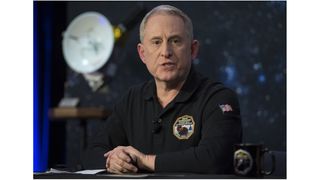
First-ever measurements
Fortunately, New Horizons carries key instrumentation — the Solar Wind Around Pluto (SWAP) and Pluto Energetic Particle Spectrometer Science Investigation (PEPSSI) — that will conduct the first-ever measurements of these critical pickup ions in the outer heliosphere and across the termination shock.
“With this in mind, the New Horizons heliophysics team has been planning out specific instrument observing modes, planning data downlink budgets (no easy feat from 60-plus astronomical units!), and engaging the broader outer heliospheric theoretical community to prepare for the groundbreaking measurements that New Horizons will return in the near future,” Poppe said.
Overall, the New Horizons team is humbled to follow in the footsteps of Voyager, said Poppe, “but extraordinarily excited to contribute first-of-a-kind measurements of the outer boundaries of the heliosphere we call ‘home.'”
Historic encounter
The crossing of the termination shock itself could be as short as 10 minutes, said Pontus Brandt, the New Horizons project scientist at the Johns Hopkins University Applied Physics Laboratory (APL) in Laurel, Maryland.
“But there will likely be multiple crossings as the shock moves back and forth over the spacecraft for multiple days and surely will be another historic encounter for New Horizons,” said Brandt.
“The data from the termination shock encounter will be a treasure trove for space physicists worldwide who are eager to understand how this vast boundary works,” Brandt told Space.com. “All these discoveries from pioneering missions like Voyager and New Horizons teach us how little we know about what lies beyond, and pave the way for a future dedicated Interstellar Probe mission,” he said.
Essence of exploration
Brandt underscored another possible New Horizons exploration bonus.
“I think we may have only seen the tip of the iceberg of the Kuiper Belt, which could be much more extended than we ever could imagine,” Brandt said.
“Dust hits measured by the spacecraft just keep being elevated, defying all our expectations of a ‘Kuiper Cliff.’ One must always give oneself the opportunity of discovery,” Brandt added, “the essence of exploration.”
In a few years, New Horizons could very well find itself in the midst of a new region of the Kuiper Belt, Brandt suggested. That would be “a historic opportunity for planetary science with important implications for understanding exoplanetary systems.”
RELATED STORIES:
New surprises
As a “first responder” and record title holder of a spacecraft, New Horizons has already chalked up history-making observations as the first spacecraft to explore Pluto and its moons up close. Also, after a nine-year journey, the probe passed its second major science target, zipping by the KBO Arrokoth in 2019, the most distant object ever inspected up close.
New Horizons’ findings are taking center stage at an upcoming 10th anniversary of the Pluto flyby science meeting now being planned for this July at APL, which designed, built, and operates the New Horizons spacecraft and manages the mission for NASA.
“We’re pulling together everything that has been learned since the flyby of New Horizons. And not just from the spacecraft, but also from the Hubble Space Telescope, the James Webb Space Telescope, and from Earth-based observations, too,” Stern said. “So stand by. I’m betting on some new surprises!”
